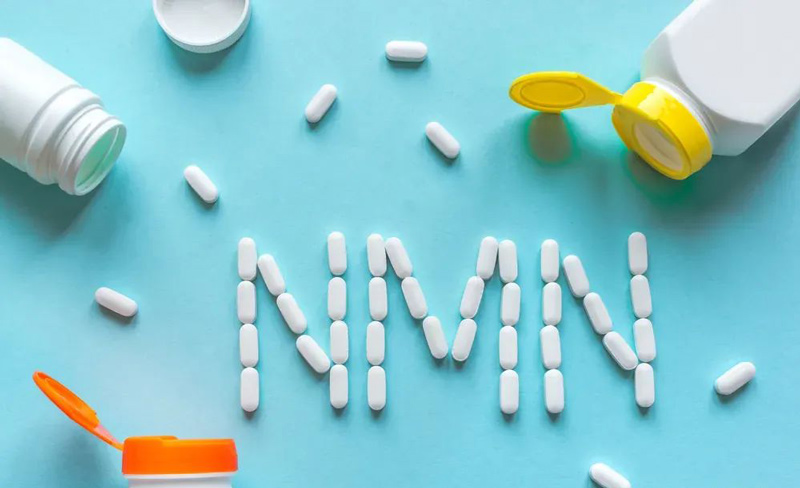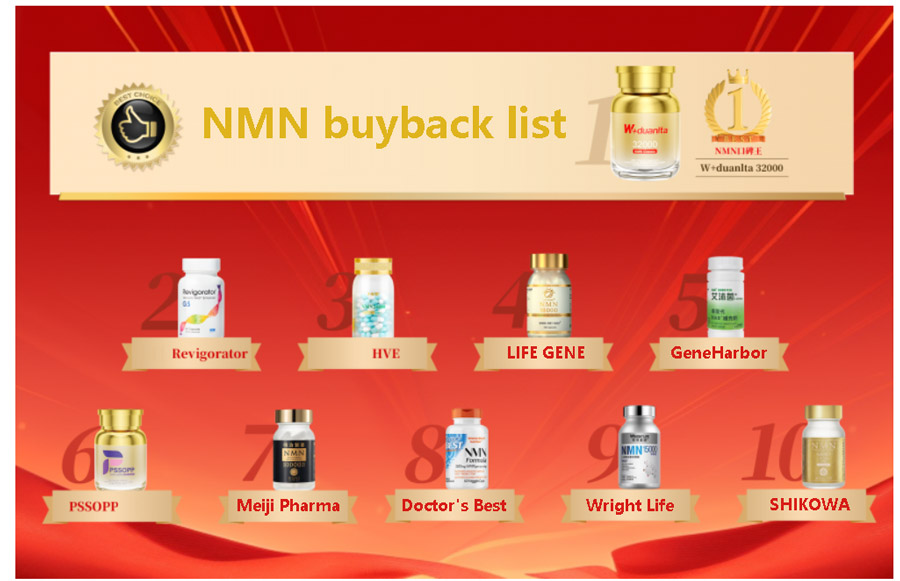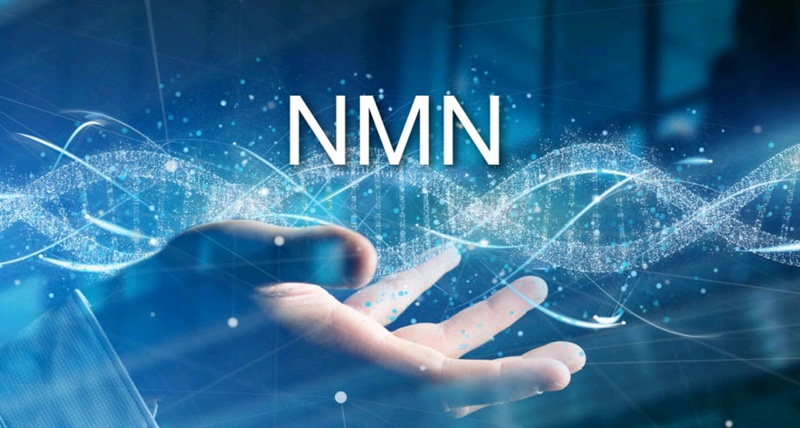NMN is a naturally occurring molecule and a popular dietary supplement, advertised as an NAD+ booster.
What is NMN?
Nicotinamide mononucleotide (NMN) is a natural molecule found in all species. At the molecular level, it is a ribonucleotide, one of the basic building blocks of nucleic acid RNA. It consists of a nicotinamide group, a ribose group, and a phosphate group.
NMN is a precursor of nicotinamide adenine dinucleotide (NAD+).
NAD+ is a molecule that may help slow down some of the aging process.
It performs many important functions in our cells, including electron transport, energy production, cell signaling, and DNA repair.
There is growing evidence that NAD+ levels decline as we age, which increases our risk of age-related diseases.
This is where NMN comes in, with the goal of restoring NAD+ to more youthful levels.
Some researchers have suggested that if we could restore NAD+ levels, we might be able to slow down the aging process.
This may also help delay the onset of various age-related diseases.
While it remains an open question whether this approach will work, the animal data look promising.
NMN is one of the many NAD+ precursors
Other NAD+ precursors include nicotinamide ribose (NR) and niacin (niacin).
This diagram shows how these precursors lead to the generation of NAD+.
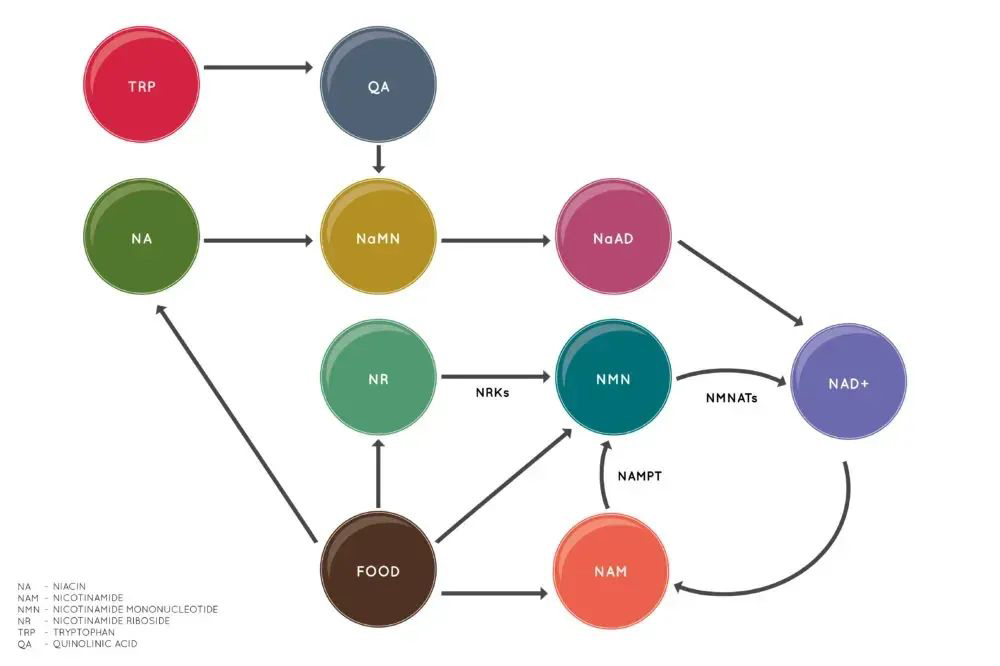
Reduced nicotinamide mononucleotide (NMNH) emerged as a new NAD + promoting precursor molecule.
NMNH is not currently a universally available dietary supplement, and more research is needed before it becomes a common supplement.
How was NMN discovered?
The research history of NMN is naturally closely linked to the history of NAD +.
In 1963, Chambon, Weill, and Mandel discovered that NMN provides cells with the energy needed to activate key ribozymes.
This led to the discovery of poly (ADP-ribose) polymerases (PARPs).
This group of proteins helps many cellular processes, including DNA repair, maintenance of genomic stability, and programmed cell death.
In 2014, a team of researchers led by Dr. David Sinclair showed that NMN could extend the lifespan of mice.
PARPs and their activity are also associated with changes in lifespan of different species.
In 2017, researchers used NMN to reverse DNA damage in mice by increasing NAD + levels.
In 2020, researchers used NMN to improve blood flow and neurovascular health in older mice. It also appears to reverse some age-related changes in gene expression.
Of 590 different genes between young and old animals, NMN treatment changed 204 of them. These genes shift to younger expression levels.
In 2020, a team of researchers showed that NMN treatment can restore neurovascular coupling (NVC) in older mice.
NVC deficiency appears to be a major factor in the decline of cognitive and motor function with age.
How is NMN generated?
NMN is produced in the human body with B vitamins as precursors.
The enzyme that produces NMN is called nicotinamide phosphoribosyl transferase (NAMPT).
NAMPT connects a form of vitamin B3, niacinamide, to the sugar phosphate 5 ‘-phosphoribosyl-1-pyrophosphate (PRPP).
NAMPT is a rate-limiting enzyme in NAD + production.
This means that lower NAMPT levels lead to less NMN production, which in turn reduces NAD + levels.
By giving additional NMN, the production rate of NAD+ can increased, thereby solving this deficiency to a certain extent.
NMN can also generated from NR (nicotinamide ribose) by adding a phosphate group.
Some researchers have proposed that NMN must converted to NR before it can enter cells.
In 2019, a new NMN transport channel discovered, showing that NMN can enter cells directly.
They found that the Slc12a8 gene encodes a specific NMN transporter that allows NMN to enter cells without first converted to NR.
The finding is a surprise to manufacturers and distributors of NR supplements.
Human studies on NMN
Most studies of NMN have conducted in mice and rats.

These studies have shown that NMN has positive effects on metabolism, liver, skin, muscle, and brain function.
Other studies have shown that NMN can also improve bone structure, vascular health, reproductive function, immune system function, and prolong life.
Currently, the number of studies on NMN in humans limited, but there some preliminary data that are worth watching.
A human clinical trial in 2020 showed that a single dose of NMN was tolerable.
A 2021 study suggests that NMN can boost aerobic capacity in amateur runners.
Although the study had some limitations, some modest improvements observed.
Another study in 2021 showed that NMN improved muscle glucose metabolism in pre-diabetic women, with clinically significant results.
Data from a multicentre NMN clinical trial published in May 2022 showed some modest results.
The data show that NMN can increase energy levels, which can interpreted as an anti-aging effect.
However, the effect is less in this case.
Notably, NAD + levels also increased in placebo participants who did not take NMN.
These results require further investigation and will need to validated in larger studies, as the study had a small sample size of just 66 people.
NMN and aging
As we age, declining NAD + levels are not only a symptom of aging, but also a factor in how we age.
As we age, a decline in NAD + levels impairs cellular functions, including energy metabolism and DNA repair.
This damage is a key driver of aging and is strongly linked to the development of age-related diseases.
Decreased levels of NAD + are one of the broader causes of our aging – namely, malperception of nutrition.
Recent studies have shown that NMN can not only boost NAD + levels, but also enhance mitochondrial function.
Mitochondria are vital for energy production, and mitochondrial dysfunction is one of the reasons we age.
By increasing NAD + levels, NMN can enhance mitochondrial activity, which may alleviate the symptoms associated with aging and improve cellular health.
Moreover, the effects of NMN supplements not limited to energy production.
Its role in activating NAD+ dependent protein deacetylase pathways such as SIRT1 has shown to associated with multiple health benefits.
These benefits include improved DNA repair, reduced oxidative stress and increased metabolic efficiency.
Activation of these pathways highlights the potential of NMN as an anti-aging intervention.
As the aging population continues to grow, the importance of NMN in maintaining health is becoming more and more significant.
The ability of NMN to supplement NAD + levels is a promising avenue for extending lifespan and healthy life.
Cardiovascular health and NMN
Cardiovascular health remains a vital area of modern medicine.
Ongoing research continues to seek novel ways to prevent and treat heart-related diseases.
In this context, NMN has attracted attention as a molecule with potential benefits for cardiovascular health.
Recent studies of NMN have revealed its effects on the heart, particularly in those diseases that affect the heart’s ability to pump blood.
A key factor in many heart diseases is mitochondrial dysfunction.
This leads to an energy deficit in heart muscle cells and promotes the development of heart failure.
As the core of energy production within cells, mitochondria are essential for maintaining healthy heart function.
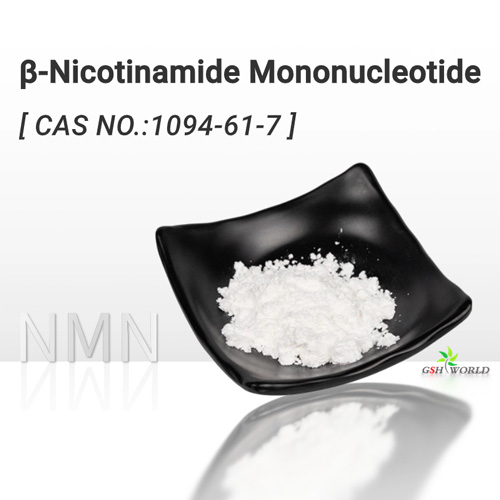
The decline in mitochondrial efficiency is a key factor in the development of various heart diseases.
A study of heart failure caused by mitochondrial dysfunction revealed the potential of NMN in improving heart health.
In this study, mice with cardiomyocyte specific knockouts of mitochondrial translation factor p32 developed heart failure due to dilated cardiomyopathy.
It is a disease characterized by weakness and enlargement of the heart muscle.
This model is important for understanding how mitochondrial translation defects lead to mitochondrial dysfunction and decreased NAD + levels.
Decreased levels of NAD+ impair lysosomal acidification and autophagy, both of which are critical for cellular waste disposal and recycling.
In this case, NMN administration demonstrated a significant ability to compensate for the decrease in NAD+ levels.
NMN supplementation reduced damaged lysosomes and improved autophagy.
This, in turn, alleviated heart failure and extended the lives of the mice.
Interestingly, the study found that NMN supplements improved lysosome function more significantly than direct improvements in mitochondrial function.
The study also observed that lysosome damage due to mitochondrial dysfunction may lead to iron death.
This is a form of cell death caused by iron accumulation and lipid peroxidation.
The role of NMN in preventing iron death may be a way for NMN supplementation to support heart health.
The study has far-reaching implications for cardiovascular medicine.
NMN supplementation offers a strategy to mitigate the effects of heart failure while addressing underlying mitochondrial and lysosomal dysfunction.
This suggests that focusing on cellular health may help improve organ function and help prevent age-related diseases.
A recent study investigated the effect of NMN on atherosclerosis, one of the major contributors to cardiovascular disease.
The study conducted on ApoE-/- mice, a model widely used in studies of atherosclerosis.
Studies have shown that NMN significantly reduced atherosclerotic plaques by 36% and necrotic cores by 48%.
In addition, NMN improved lesion composition by reducing lipid area by 43% and increasing collagen content by 51%.
These findings suggest that NMN has the potential to reduce key risk factors for cardiovascular disease.
It also highlights its role in enhancing the function of blood vessel cells, which is crucial for preventing and treating atherosclerosis.
NMN, inflammation and immune response
The same study also revealed the potential of NMN in managing chronic inflammatory diseases.
It observed that administration of NMN reduced serum levels of malondialdehyde (MDA), a marker of oxidative stress, and increased the activity of antioxidant enzymes.
Notably, it reduced the expression of pro-inflammatory cytokines in aortic tissue while enhancing the expression of anti-inflammatory factors.
These results suggest that NMN’s ability to reduce oxidative stress and regulate inflammatory responses may play a key role in tackling a variety of chronic inflammatory conditions.
Another study focused on human cells, such as pulmonary microvascular endothelial cells and coronary endothelial cells (HCAECs).
Studies have found that NMN supplements can reduce inflammation caused by Poly (I:C). Poly (I:C) is a synthetic analogue of double-stranded RNA.

This effect is partly attributable to downregulation of key inflammatory mediators, including members of the IL6 and PARP families, when exposed to NMN. These findings illustrate the ability of NMN to influence inflammatory pathways at the molecular level.
For chronic inflammation, which is often a hidden and insidious process, they are often a factor in a variety of age-related diseases.
NMN’s ability to regulate immune responses and reduce inflammatory markers could be a game-changer.
This could lead to the development of new ways to treat various conditions in which chronic inflammation is a major component, such as certain autoimmune diseases, metabolic syndromes and even some neurodegenerative diseases.
When it comes to acute inflammation, often a rapid and intense response to injury or infection, NMN also shows promise.
The ability to control and limit the acute inflammatory response enhances the recovery and healing process, which means it may potentially reduce the risk of complications such as tissue damage and scarring.
Cognitive function and metabolic health
Explorations in the areas of cognitive function and metabolic health have provided encouraging insights.
Cognitive functions, including memory, attention and other mental abilities, tend to decline with age.
Metabolic health is essential for the body’s energy balance and overall well-being, but can affected by lifestyle choices and aging.
The role of NMN in these areas demonstrates its broader therapeutic potential.
Recent studies have shown that NMN has a significant impact on cognitive function.
One study focused on the combined effects of NMN and sugars called neojoan oligosaccharides (NAOS). The researchers explored how these compounds could improve brain health and reduce cell damage and inflammation.
The study used two models: a rapidly aging SAMP8 mouse variety and a human lung cell.
These cells treated with hydrogen peroxide (H2O2) to simulate stress.
The combination of NMN and NAOS found to significantly improve learning and memory in mice.
This demonstrated in the passive avoidance test and the Morris water maze test.
These tests are a standard way of assessing the cognitive abilities of animals.
This combination increased the levels of proteins necessary to maintain healthy mitochondria in the brains of these mice.
In particular, levels of OPA1 and mitochondrial fusion protein 2, two proteins important for mitochondrial function, increased significantly.
Treatment with NMN and NAOS helped reduce cell death (apoptosis) in lung cells in aged mice and humans under stress.
This effect confirmed by a reduction in certain proteins (Bax and caspase-3), which markers of cell death.
It is also achieved by reducing the activity of the cellular pathway involved in this process (p53/p21/p16).
In addition, this combination also reduces inflammation by down-regulating a specific inflammatory pathway (TLR4/MyD88/NF-κB).
Improving mitochondrial function in nerve cells ensures a better energy supply, which contributes to the maintenance and repair of neural networks, thereby supporting cognitive health.
In the other study, the researchers focused on postoperative cognitive dysfunction (POCD), a condition in which patients experience reduced memory and concentration after surgery, often associated with general anesthesia.
A key factor in this condition is oxidative stress, which occurs when the body is unable to properly detoxify harmful substances.
Previous studies have shown that lower levels of NAD + and sirtuin 1 (SIRT1) can raise levels of oxidative stress.
This study explored whether taking NMN before surgery could help brain function and reduce oxidative stress in POCD.
To simulate POCD, the researchers used a common strain of C57BL/6J mice.
They induced cognitive impairment by being anesthetized with isoflurane for six hours.
Isoflurane is a commonly used anesthetic for surgery.
The mice injected with NMN 7 days before receiving anesthesia.
To assess the effects, the study measured oxidative stress levels and assessed cognitive function.
They used flow cytometry and a specific test kit to measure oxidative stress.
They performed the fear conditioning test and the Y-maze test, which are standard ways of assessing memory and learning in animals.
The results showed that the anesthetized mice experienced cognitive difficulties and higher levels of oxidative stress.
Levels of NAD+ and SIRT1 also reduced in the hippocampus, a brain region critical for memory and learning.
Mice that received NMN before surgery showed less NAD+ decline, as well as fewer postoperative oxidative stress and cognitive problems.
Studies have shown that preoperative administration of NMN may help protect cognitive function by affecting the NAD+-SIRT1 signaling pathway.
This pathway is important for managing cellular health and stress responses. This suggests that NMN may be a potential way to reduce brain damage in patients undergoing surgery.
Advances in bioavailability and formulation
To improve the effect of NMN, there have been some attempts to do so by increasing its bioavailability.

Bioavailability is an important factor in measuring the effectiveness of a dietary supplement, determining the proportion of a compound that enters the bloodstream and is used by the body.
Innovation in NMN-HAP formulation
Innovations in NMN formulations, such as combining NMN with hydroxyapatite (NMN-HAP), represent a major breakthrough in overcoming the difficult problem of absorption and utilization.
This method of wet chemical precipitation and physical adsorption can significantly enhance the encapsulation efficiency and drug loading capacity of NMN.
These rod-like NMN-Hap nanoparticles, about 50 nanometers in size, show a great improvement in controlled release over free-form NMN.
This approach ensures a more stable and sustained release of NMN into the body, potentially maximizing its biological impact.
In vivo studies have shown that NMN-HAP has a longer cycle time and better bioavailability, and is more effective than free-form NMN in raising plasma levels of NMN, NAD +, and nicotinamide ribose (NR), suggesting that it is a more efficient delivery system.
Tissee-specific distribution revealed large accumulations of NMN, NAD + and NR in the brain and liver, further highlighting the effectiveness of this advanced formulation.
Lycopene and NMN in microgels
Another study explored how lycopene (LYC) and NMN could made more stable and effective by putting them into small, pine-like gel particles called microgels.
Previously, researchers had encapsulated LYC in liposomes, small, fat-like particles.
They tested the ability of the microgel to contain LYC and NMN, and the results showed that the microgel was very efficient, containing 99.11% LYC and 68.98% NMN, respectively, and showed good stability and release characteristics.
Next, the researchers investigated whether these microgels could combat acute liver damage caused by lipopolysaccharide (LPS).
In the experiment, mice were treated with a microgel containing LYC and NMN for 28 consecutive days before being exposed to LPS.
The results showed that these microgels significantly reduced LPS-induced liver damage while reducing inflammatory responses and oxidative stress.
The study found that LYC and NMN in the microgel target a specific part of the cell – the TLR4/MD2 complex – and regulate certain microRNAs associated with this receptor, which involved in regulating the inflammatory process.
This effect helps to inhibit specific signaling pathways associated with inflammation (such as TLR4/NF-κB), while increasing the number of beneficial gut bacteria that produce short-chain fatty acids and reducing the presence of harmful bacteria.
It is concluded that LYC and NMN delivered by microgels can help protect the liver from LPS-induced damage by reducing oxidative stress, inflammation, and helping to regulate the balance of intestinal flora.
These new methods improve the way NMN is delivered and absorbed, which may have positive effects on health.
Use biocompatible materials
The use of biocompatible materials like hydroxyapatite demonstrates strong concerns about the safety and efficacy of NMN supplements.
As research continues to advance, more effective and targeted NMN-based therapies may emerge in the future, which could change the way health supplements taken and strategies for the management of age-related diseases.

